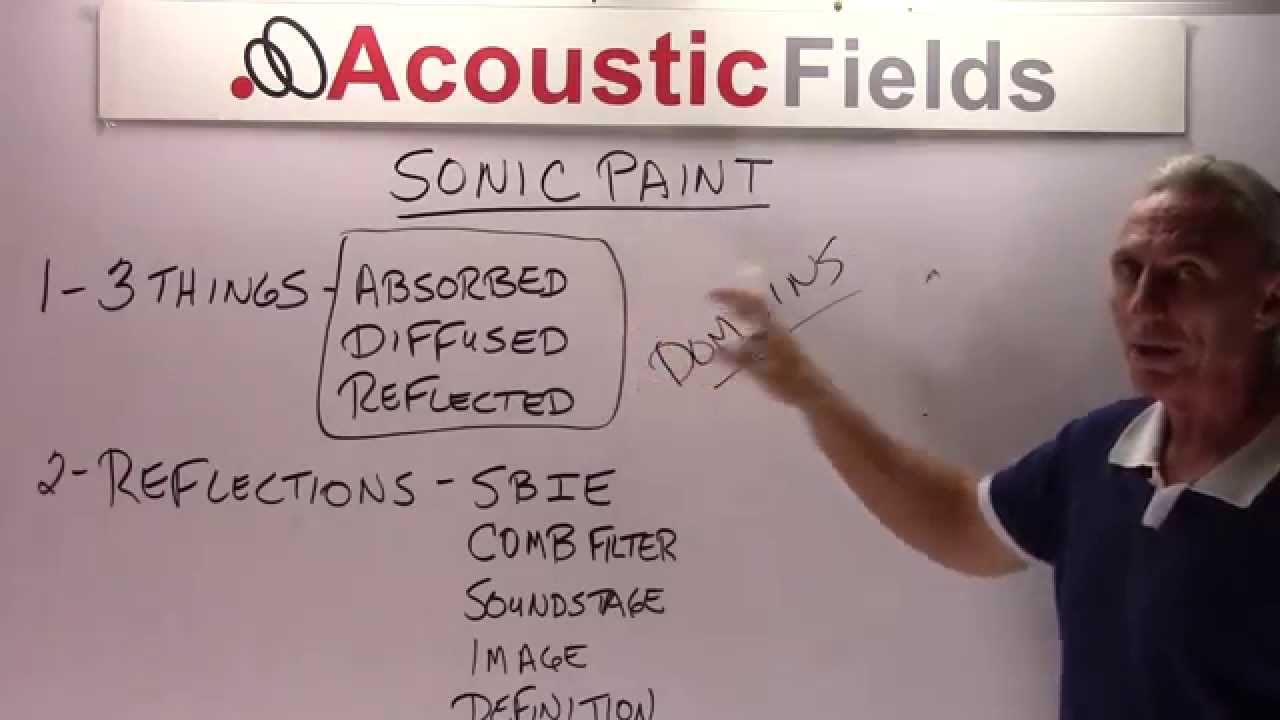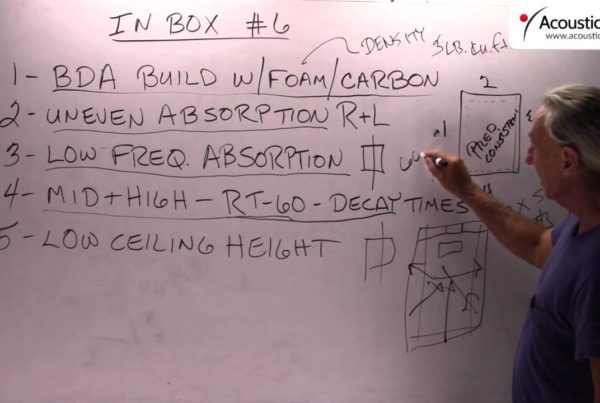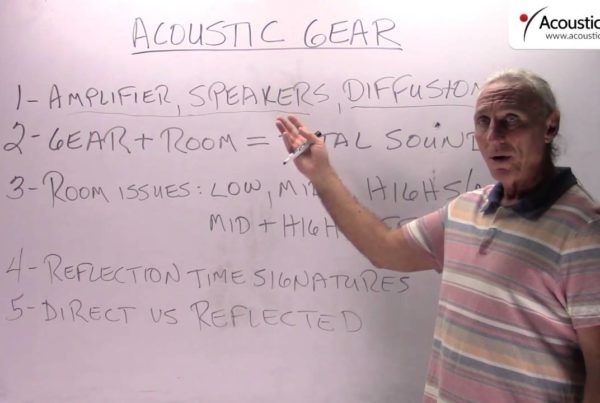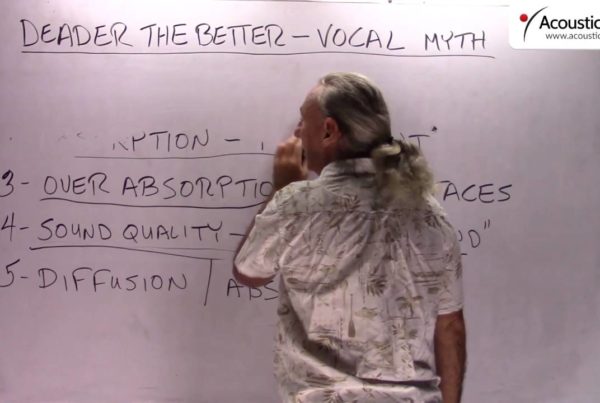Hi everyone, Dennis Foley from Acoustic Fields. Today we’re going to have a little fun getting back to the basics again. Today we’re going to talk about sonic paint to give you some fun things to think about.
I want to get back to the basics because a lot of people are getting confused on sound. There’s only three things our laws of physics tell us that are characteristics of and things that happen to sound energy in our world. It’s absorbed, diffused or reflected. Those are the only three. So let’s try to keep this kind of paradigm in mind here because these are the only three domains if you will that we have to work with with sound energy.
Hopefully we’ll find life on other planets and then have some other ideas, that would be great. But today this is what we have to work with in our world. So three things can happen to sound. Let’s kind of look at each one and see what the impact is on it. Absorption and diffusion you’re all familiar with. You know, we’re all really good at those two things.
So these are two tools – let me, sorry – so these are two tools that we use to really treat this energy. So these two characteristics when it comes to sound, we could deal with that. We have technologies that can absorb and diffuse. It’s the reflected energy that’s always the problematic stuff. So we use two of the properties that happen to sound to kind of manage the third one which is unwanted. Absorption and diffusion, we can live with that. We can add more, we can take some out, we can adjust depending on usage. But what are we chasing? What are we always after? We’re always after the reflections.
The reflections cause lots of issues. Speaker boundary, interference effect, speaker too close to a wall, the energy between the speaker and the wall. Comb filtering, similar situation. Back and forth movement of energy at different frequencies. Image in our two channel systems, in our home theater systems, in our mixing and mastering environments. Definition, separation, all this, RT 60 times, speech intelligibility ratings, it’s all about reflection management.
So we use two of the three properties that our laws of physics give us to really manage the third. And if you think about it in that way, think about it as sonic paint, you have absorption and diffusion technologies to manage the reflected energy.
And it’s always the reflected energy no matter what the usage. If it’s mixing, mastering, control, if it’s a church venue or reverberation times caused by lots of reflected energy or issues, you know, if you’re trying to mix and master, if you’re just listening, it’s all the reflected energy from source and room.
So reflections are a big big issue. And how to we deal with those? We use absorption and diffusion. So it’s kind of a – these are our laws but we use two of the three laws to treat the third law. So that gives you an idea kind of helps you understand the difference here. So in this graphic we show that only three things happen to sound. It’s absorbed, it’s diffused or it’s reflected. And we’re using absorption and diffusion to manage the reflected energy.
Thank you,
Dennis Foley
—
This is an unedited transcript from our video series from Acoustic Fields. There will be some errors in grammar and sentence structure that occur during this translation process.
For complete understanding and comprehension, please view the video which is included in this text. For any additional information regarding this topic or others relating to room acoustics, please contact us directly at:
P: 520 – 392 – 9486







